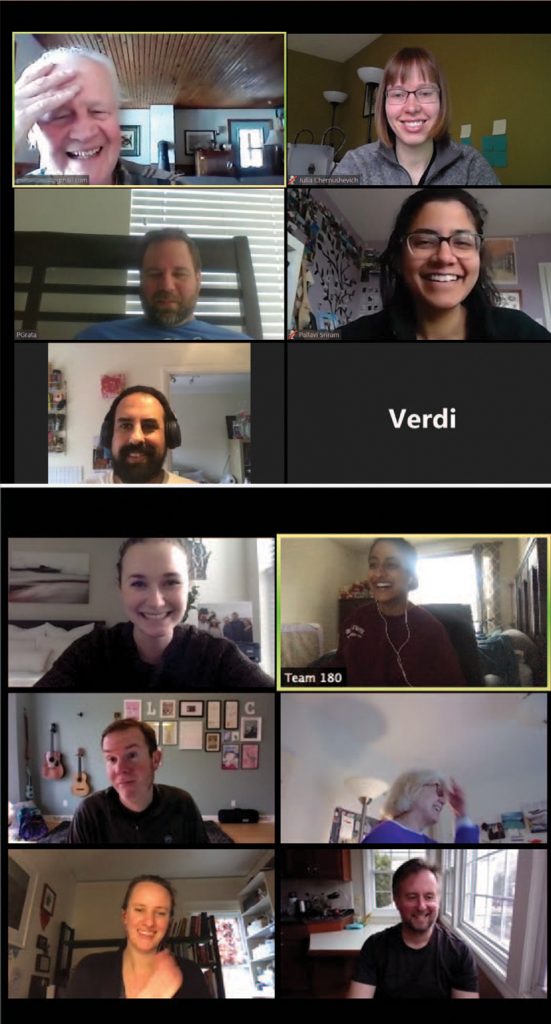
Even though Noah Yang and Shayan Roychoudhury, both master’s students in WSE’s Center for Bioengineering Innovation and Design, had to put a stop to their research projects when the campus closed on March 16, the pair quickly came up with a way to help fight the most massive health threat of our lifetime, while working remotely.
In the past, CBID organized design challenges to address problems related to Ebola and Zika. Following a similar model, the students decided to create a virtual event to solicit ideas from around the world to fight the novel coronavirus. “We were just really driven to do something,” Roychoudhury says. “With all the time we have with social isolation, it was the perfect opportunity for us to work on this.”
Working from their homes, they assembled a leadership team and spread the news about the five-day design challenge. Participants would be able to access the most up-to-date research about the virus, learn about the challenges facing health care workers and public health officials, and connect with mentors as they hammered out their ideas. Within days of announcing the event, 515 teams comprising 2,300 participants from 25 countries had applied.
The teams focused on three main problems: how to educate the public about COVID-19, how to stop the spread of the virus, and how to combat shortfalls of necessary supplies and equipment, including surgical masks, protective gear, and ventilators. The challenge kicked off with a three-hour virtual seminar on Thursday, March 24. Over the next few days, they refined their ideas, interviewing health care workers about their needs, collaborating over Zoom videoconferencing software, and in many cases crafting prototypes in their homes.
The solutions the teams then presented via video chat included methods for disinfecting N95 masks so that they could be reused, a disposable mask cover made out of abundantly available surgical drapes, and a Web browser extension that could flag inaccurate information about COVID-19. To help people in crowded refugee camps without access to adequate soap and water, one team created a device that synthesizes bleach by jolting salt and water with an electric current powered by solar panels.
All the ideas will be posted to an open-source website hosted by CBID, allowing others to replicate or improve upon them.
Our researchers, medical teams, staff, and students are working tirelessly to help with testing, patient care, and preventive care—with your support we can do more! Visit engineering.jhu.edu/giving to make a gift in support of our efforts.




